Disclosure: Meeple Mountain received a free copy of this product in exchange for an honest, unbiased review. This review is not intended to be an endorsement.
Camping can be an idyllic return to nature, one where you leave the bustling highways and city life behind for the untroubled tranquility of the wilderness.
Or, camping can be a constant struggle to survive as bears attack with the intention of eating you at every turn.
Care to guess which one we’re talking about today?

Setup
Start by dividing the cards into four separate decks based on their backing color: Blue (Equipment), Yellow (Baby Bear), Orange (Bad Bear), and Red (Extra Bad Bear) cards.
Place the three Bear decks, face-down, within easy reach of all players.
Then turn six Blue equipment cards face up to create “Crazy Willy’s Shop”. (Seriously, don’t ask. I’ll get to it soon enough.)
Give each player a Stock card. Cut out the tiny Food, Tooth, and, um, Explosion(?) icon squares and give one of each to all players. The food square is placed atop the star at 10. The explosion and tooth icons start, unscored, at the top of the Stock card.
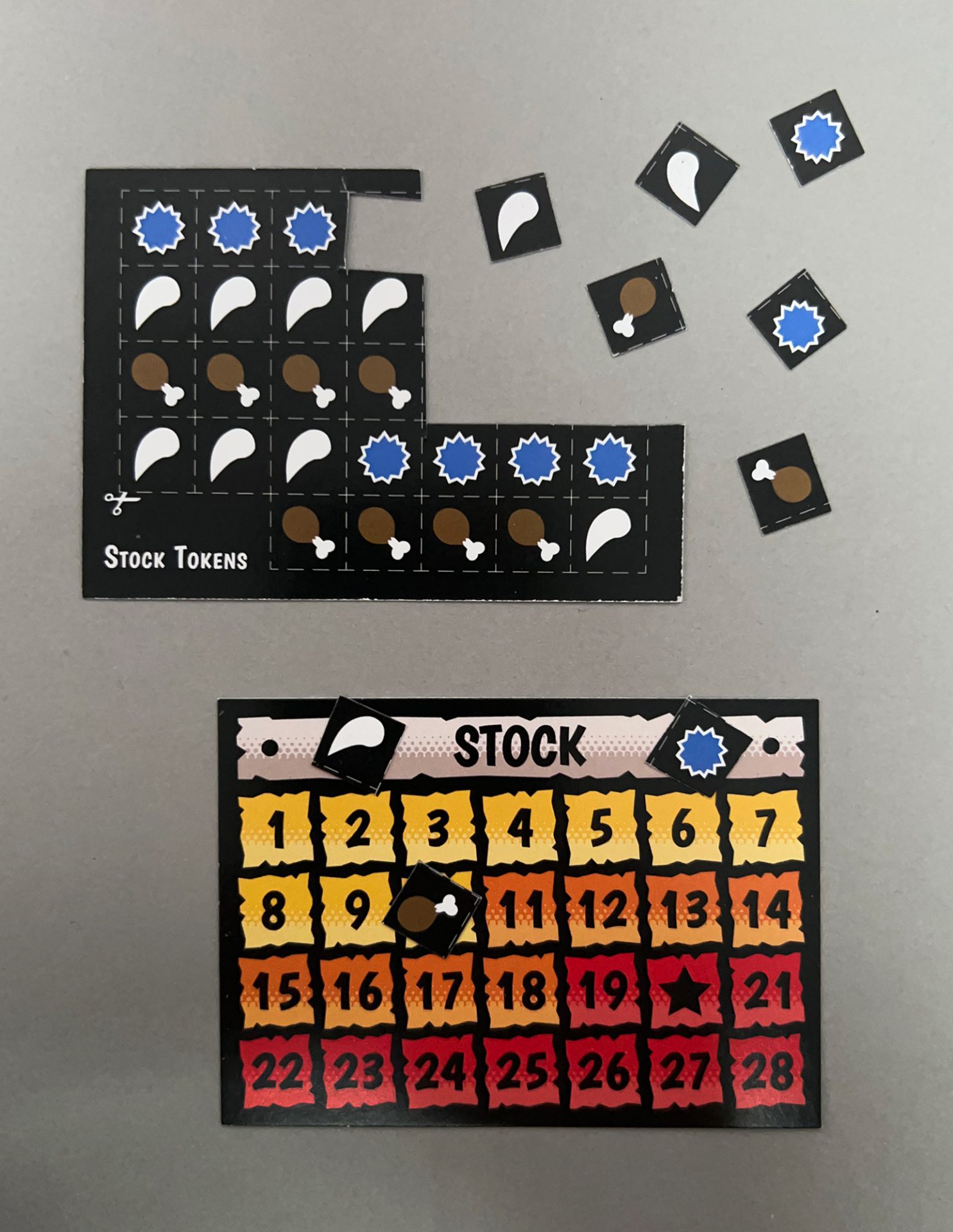
Then deal each player a starting hand of seven Encounter cards.
Now you’re ready to play Fight A Bear!!! (Known hereafter simply as Fight a Bear.)
How to Play
On a turn, you will start by drawing the top card from the Encounter cards and adding it to your hand. Encounter cards include items that will help protect you from Bear attacks and tools to help fight off Bears, boost your abilities against a Bear, or that will increase a Bear’s attack on another player. There are even a few cards that will let you alter the rules for a bit.
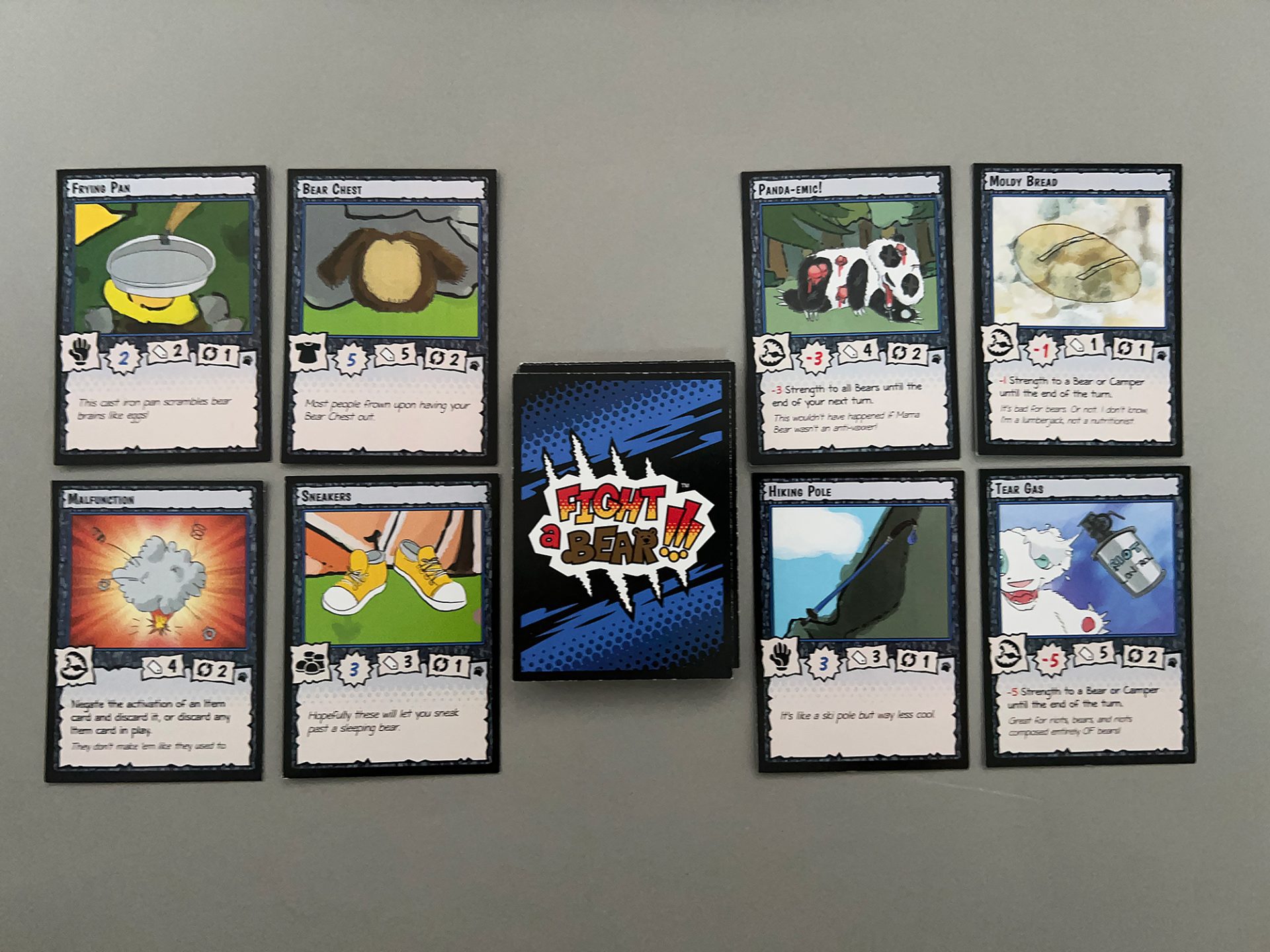
As part of your first turn, you’ll want to play some of those Equipment cards in front of you. At the end of each turn, you’ll have to fight a bear, and you’re going to want to be prepared.
Personally, I’m partial to arranging defending cards in a way that most reflects my card-created person: Helmet on top; body armor in the middle; hand-held weapons on either side; protective footwear on the bottom. Arrange these cards/defenses in any way that suits you and your character.
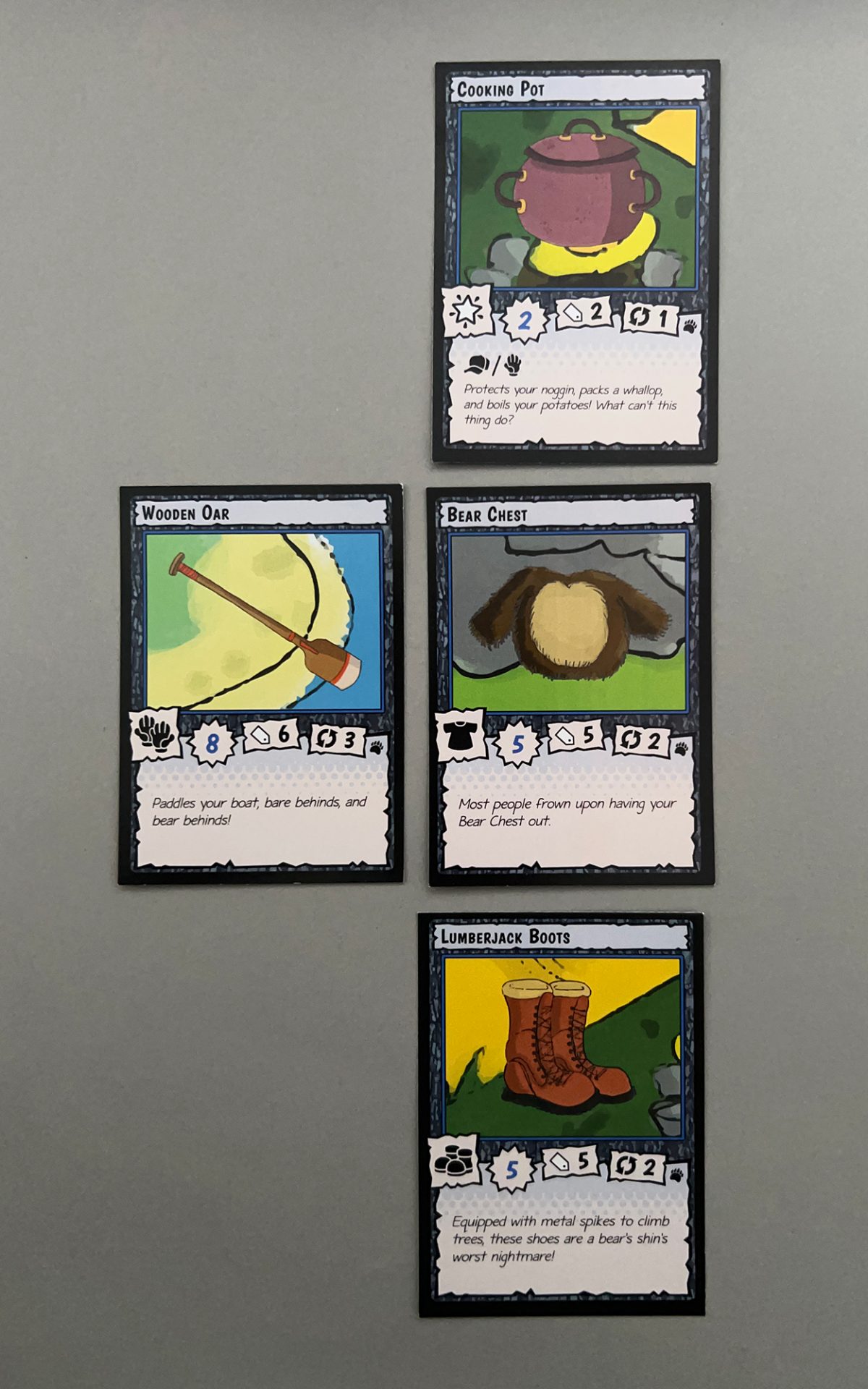
After equipping your Camper, total your equipment and move your, um, Explosion icon on your Stock card to that number. This is your combat strength.
As previously described, there are three types of Bear: Baby Bears, which have a combat strength of 0-10; Bad Bears, with a combat strength of 10-18; and Big Bad Bears who have a combat strength of 16-25. Consider your own combat strength and choose wisely.
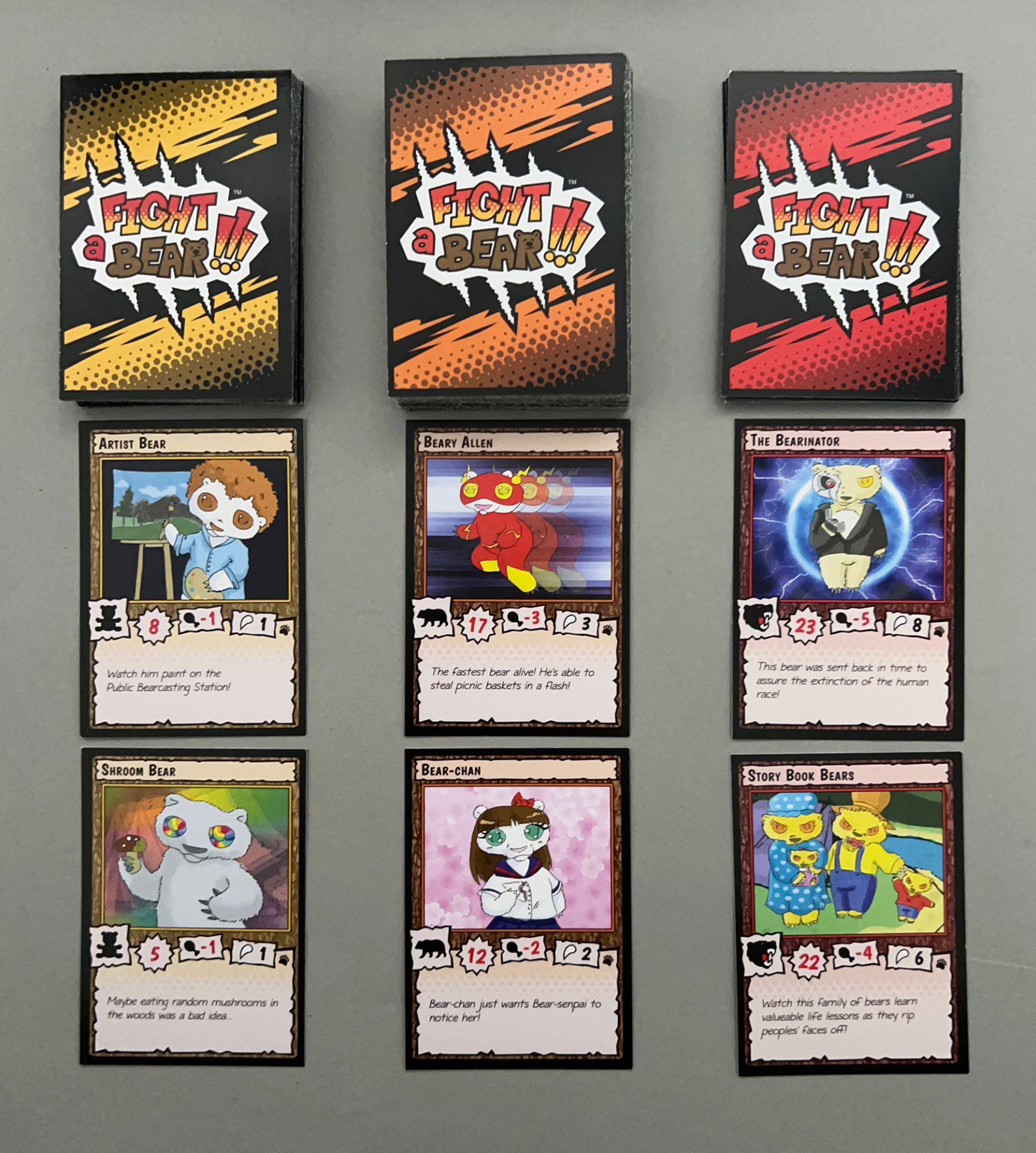
If your combat is higher than the Bear, you’ll gain the number of teeth shown on the card. (Why teeth? I don’t know. It’s a bit gruesome, if you ask me.) If the Bear’s combat is higher, you lose the amount of Food shown on the card. Run out of Food and you’re out of the game.
There is one other action you can take on a turn. At any time before you fight a bear, you can sell excess cards from your hand to buy other cards. Add up the numbers next to the recycle icons on your excess cards. If there’s a card in Crazy Willy’s Shop with a price tag value that meets your recycle total, you can buy it. Otherwise, you can trade in a recycle total of three for the top card of the Encounter deck as many times as you can afford.
Initially, players can only choose to fight Baby and Bad Bears. Once any player gains ten teeth, they can take on the Big Bad Bears.
Along the way, you and your opponents can make it harder to fight off Bears. At any point in a Bear fight another player can play a card (or cards) that either make Bears stronger or Campers weaker. Or that force you to fight two bears at once. You get the idea.
To win, you must have defeated a Big Bad Bear and have at least twenty teeth on your Stock card.
Components
Honestly, the components, few as they are, disappointed me more than just about any other game in recent memory.
Please indulge me while I repeat that first image of the Fight A Bear box. I’ve played several test games on my own to be sure I could teach the game to my gaming group. Then I’ve taken it with me to Game Night on at least four occasions. See the wear and tear to the box? I’m careful with my games. The box is made out of the same thin cardstock that the cards are made from.
As for the cards, they’re overly thin, plain, without a linen finish. This makes them difficult to shuffle without shuffling in clumps. And those sharp corners are a bit unprofessional as well. (Thinking I had received a prototype, I emailed the designer. He confirmed I had received a standard production copy of the game, the same one that had gone out to Kickstarter backers.)
Then there’s the Stock cards and the markers. Cutting out a card to create the Food, Tooth, and “Explosion” markers? Um, no. One breath in the wrong direction and they’ll slide off the Stock card. (These make the original Terraforming Mars tracking cards look good.)
I liked the artwork on the box and was expecting to see it carried over onto the cards themselves. However, you’ve seen the artwork in the images above. It’s like the elaborate cover art for a video game that only has 8-bit graphics. One of my gaming group looked at the card art and asked, “Did they use Microsoft Paint for these?”
The instructions are easy to follow, however they slide in and out of “Crazy Willie”’s voice. I’m all for making a game more immersive but, personally, backwoods bumpkin gets annoying quickly.
While there’s a lot to dislike about the production, there’s a lot to like in the gameplay.
Thoughts
My colleagues at Meeple Mountain and I take our reviews seriously. We play the games under review multiple times before beginning the writing process—a writing process that is peer reviewed and edited before it is published for you, the reader.
At times, we go to extravagant lengths.
Case in point: after my first play-through of Fight A Bear I realized I was going to have to do something I swore 12 years ago that I would never do again: I played Munchkin.
My first two plays of Steve Jackson’s Munchkin were, admittedly, under less-than optimal circumstances. Those games were played with people who knew the game all-too-well and saw me less as a “New Convert to the Hobby” than “Fresh Meat to be Destroyed”.
It’s little wonder I said, “Never *&#$%&@#ing again.”
Until Fight A Bear.
One of my regular gaming friends was amazed. “You really want to play Munchkin?” he asked, incredulously.
For your sake, dear reader, I did.
I think it’s fair to say that Fight A Bear shares a lot of its DNA with Munchkin.
If you’re not familiar with the base game of Munchkin, allow me to review:
Players take on the roles of Dungeons & Dragons-style classes and races. You then equip yourself with various items that increase your attack level (headgear, shields, armor, and weapons). At the end of each turn, players then take on Monsters which, if defeated, allow you to level up. Defeat enough Monsters to reach Level 10 and you win!
Sound vaguely familiar?
In Munchkin, players continue fighting Monsters and leveling up until they approach Level 9. If they then defeat a Monster at the end of their turn, they win. Of course, their opponents will likely be ready to play any number of cards that either decrease the player’s strength or increase the Monster’s hit points.
Both games allow for equipping for greater stamina against the bad guys. Both require players to fight bad guys at the end of each turn. Both also allow players to accumulate cards to cut down an opponent’s chances of winning.
And while I’m willing to state that there is no small coincidence in these ideas, there is a single fact that remains for me and my group: Fight A Bear is the better game.
Read me out here. I respect the gaming empire Steve Jackson has created with Munchkin. If played properly, playing any version of Munchkin can make for a fun gaming session. Between reading the flavor text of the Treasure and Monster cards aloud and battling the Monsters, there are Clever Puns a’Plenty throughout the decks of cards. You and your fellow players are sure to find yourselves smiling and laughing throughout the game.
But, only after slogging through lots and lots and lots of rules.
Really annoying rules.
As Meeple Mountaineer Kurt Refling wisely pointed out, Munchkin is a game of tiny rules. This was brought home when we played Munchkin recently. The double-sided, tri-fold Rules Sheet was not only overly complex, but it contained such minutiae that it repeatedly put a halt to the fun for the evening. Our Rules Lawyer went back to this Rule Sheet several times to make sure we were playing Munchkin properly, all the time expressing his disbelief that he didn’t remember the game being so complicated when playing with his sons.
And here’s why Fight A Bear is by far the better game: it strips away a lot of the unnecessary, tiresome rules surrounding Munchkin and presents a very clean card playing, defeat-the-monster, take-that gaming experience.
Forget the leveling up. Class and Fighter Type? You’re a camper fighting Bears, for goodness sake!
Toss aside the five-card hand limit. Don’t even think about laying cards sideways to use or trade their abilities on later turns. Just concentrate on building your Strength and Bear Tooth empire until you feel confident you can take on anyone opposing your claim to the throne.
Or, better yet, take the strategic route and let someone else make their claim first. Let them suffer the slings and arrows of their opponent’s cards saved up to increase the strength of the attacking Bears or decrease the strength of the attacking Bear.
Simply put, Fight A Bear is the game Munchkin should have been.
I was on the fence about Fight A Bear after our initial play-throughs. We’d read through most of the Bear-puns and I predicted that subsequent games would not only be less amusing but, as a result, less fun.
On the Bear-Pun side, I wasn’t wrong. But the strategic aspect of the game? It surprisingly held true over repeated replays.
With the winning conditions clearly set, endgame turns become increasingly tentative. Sure, you might be able to take on that Big Bad Bear and end your turn with 20 teeth, but can you survive a questionable multitude of attack cards played against you? Or should you discard Equipment cards and/or Teeth to draw additional cards from the deck, hoping to gather the right combination of offensive cards into your hand to fend off the inevitable attacks?
And yet…and yet.
In my email communication with the designer, he admitted this was his first game and it was very much a learning process. I completely get that. Having done a Kickstarter myself (admittedly for a book rather than a game) I know the difficult decisions a first-time creator needs to make between Price and Quality. How much will backers be willing to contribute towards a new game by an unknown creator versus how good I’d like it to look.
And here’s the really difficult thing for me. Fight A Bear is a good, solid game. As an enjoyable filler game that can be easily taught and played, it has earned a place in my collection.
But, do I recommend it?
See, this is where it gets tricky.
As much as Fight a Bear surprised us in the gameplay, I have a very hard time recommending you spend the list price for a game with components of this quality. I’d love to see the designers regroup and put out Fight a Bear 2.0 with improved artwork, cardstock, and a better box for around the same price. Then it would be a much easier recommendation.
However, if you were disappointed by Munchkin and have been looking for a better, punchier game, Fight A Bear might just be the right game for you.


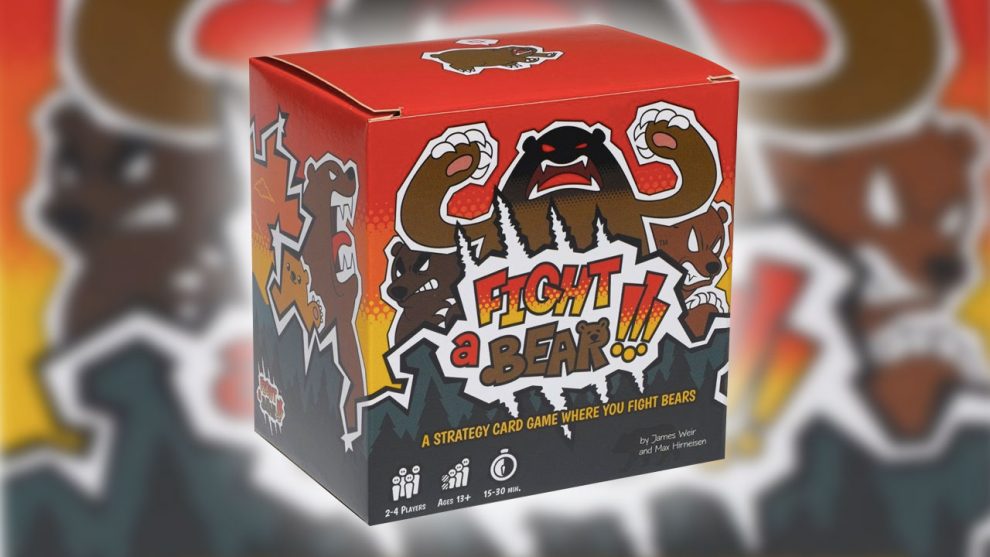



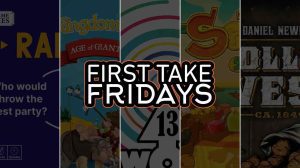
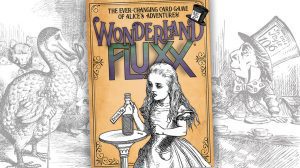




Add Comment